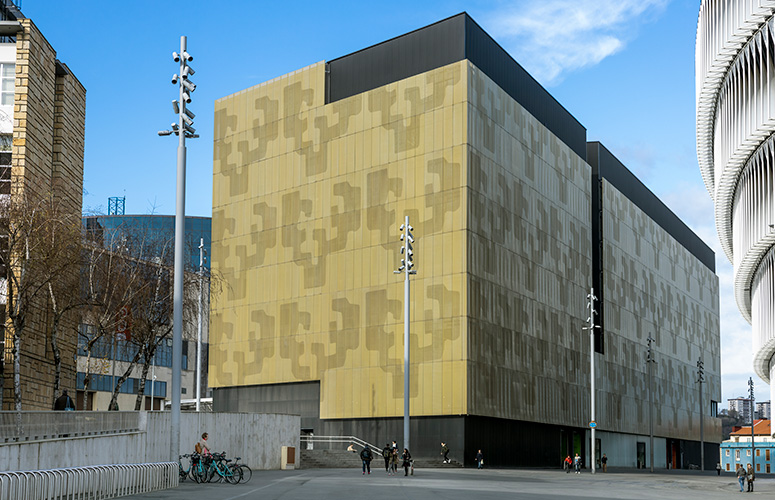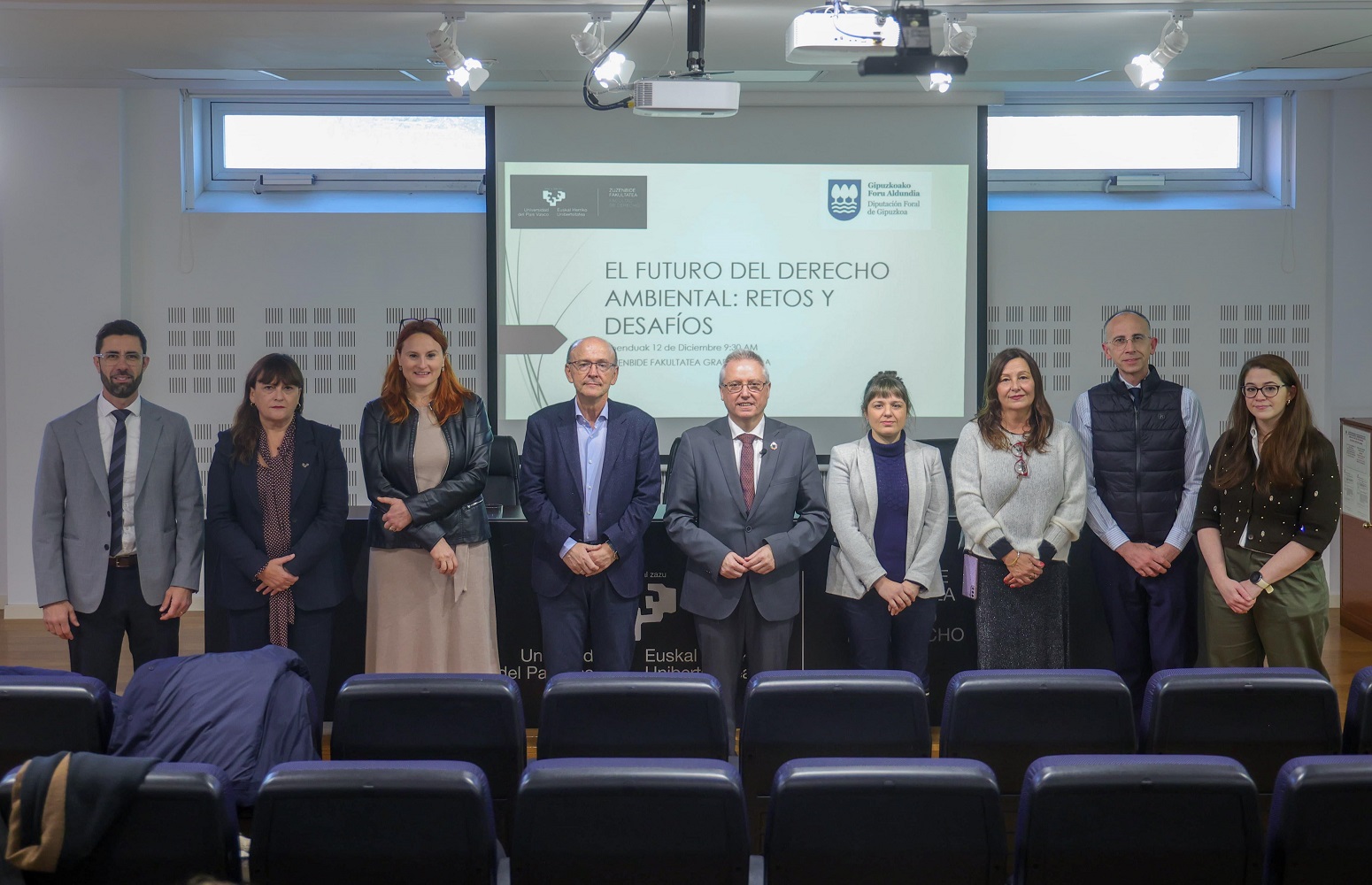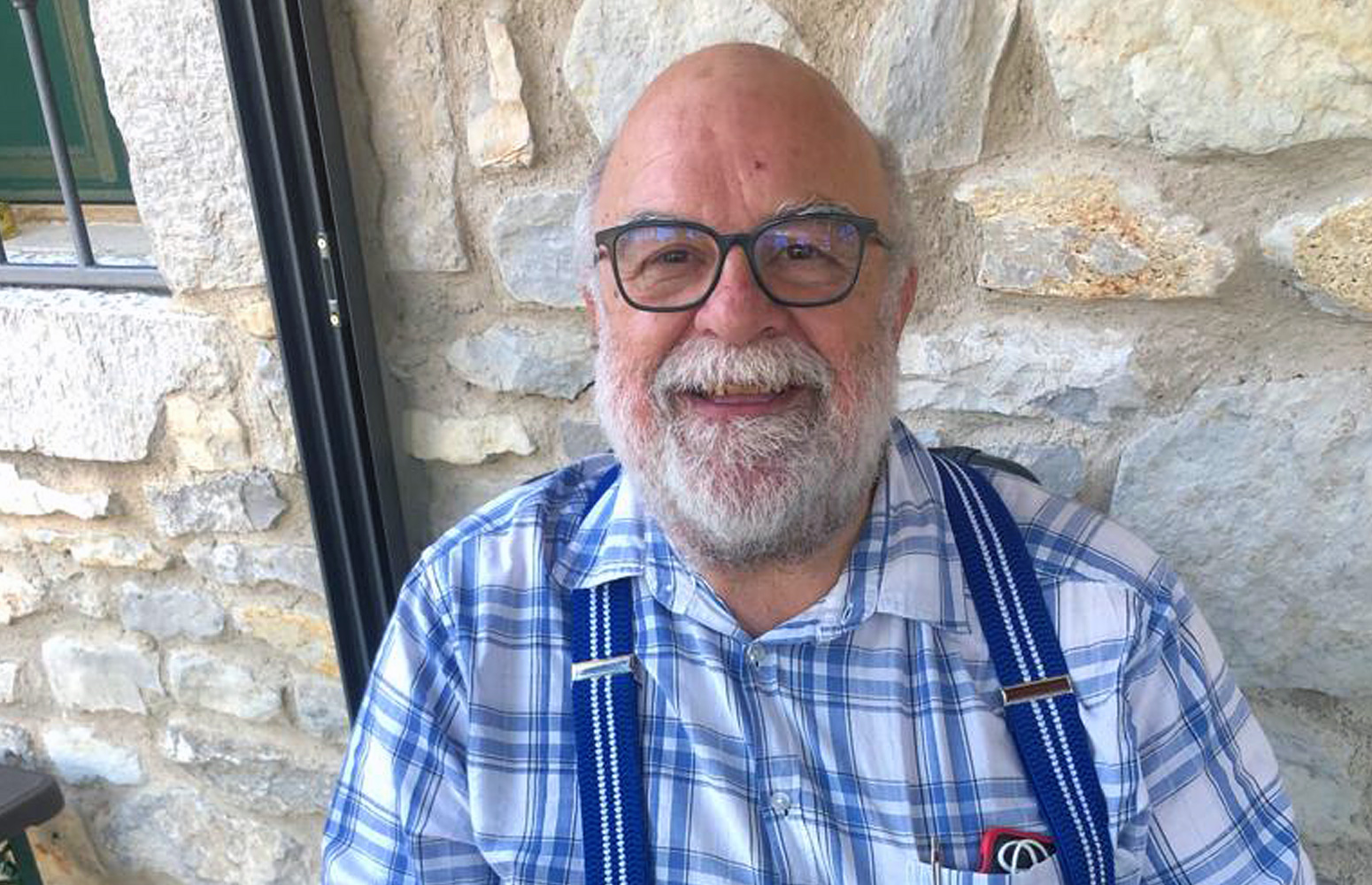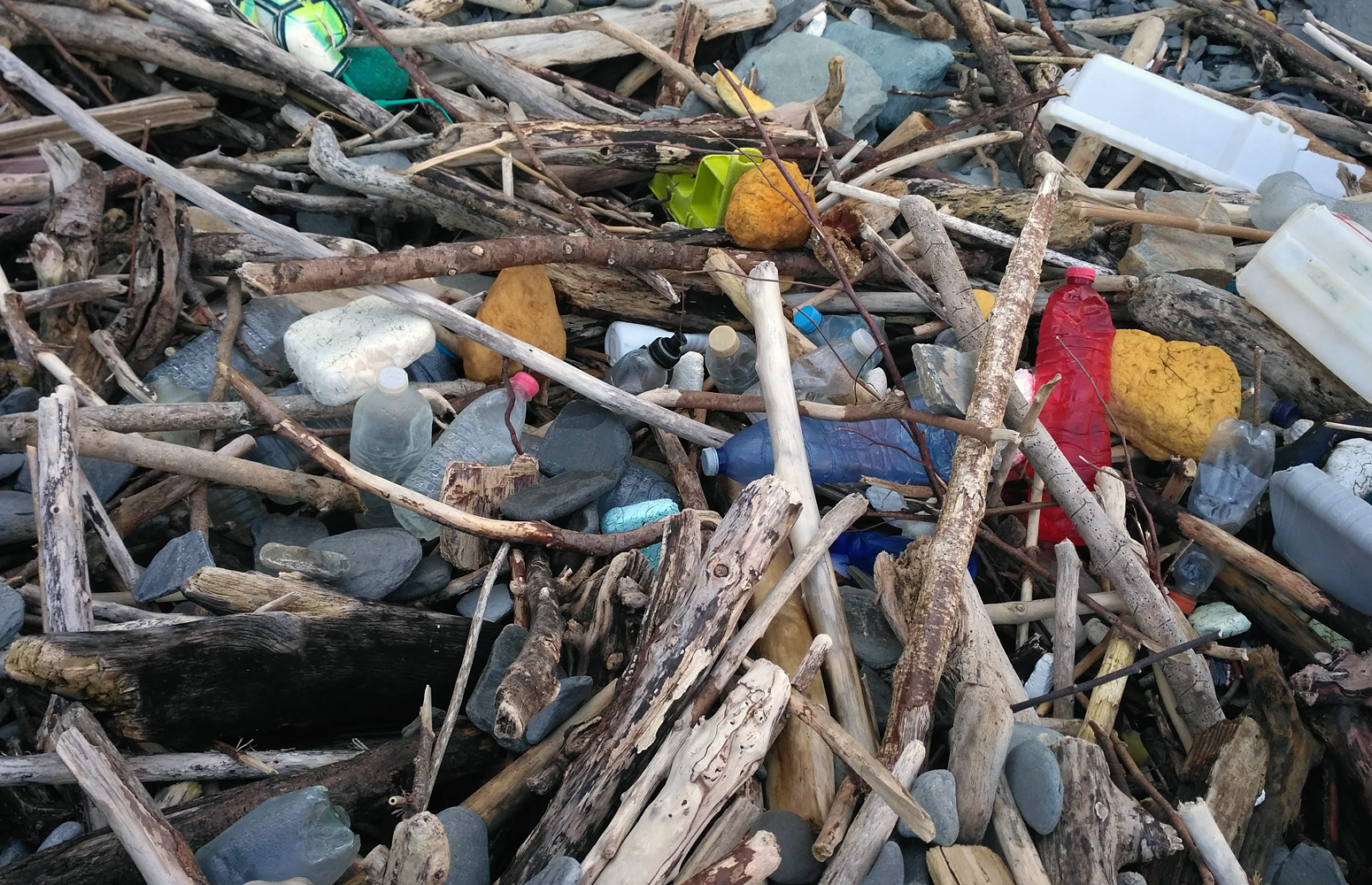Gelidium algal beds on the Basque coast in severe decline due to climate change
According to UPV/EHU-University of the Basque Country researchers, this species is a great asset in the coastal ecosystem and its disappearance is leading to changes in the marine fauna
- Research
First publication date: 23/01/2015
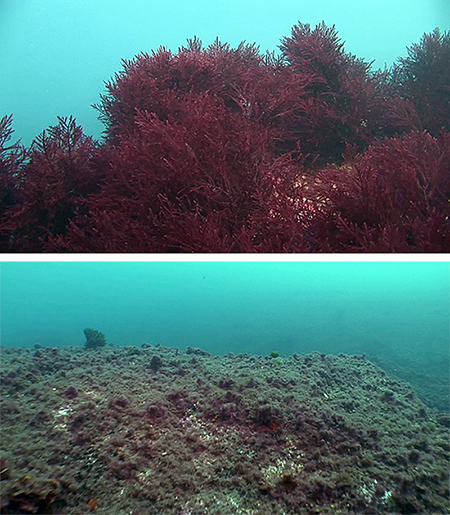
The rise in the temperature of the water, the increase in solar radiation, the fall in nutrients and the big storms are the main reasons why recent years have been seeing a considerable fall in the Gelidium corneum red algae populations on the Basque coast. According to data gathered by the UPV/EHU's Bentos Marino Research Group led by José María Gorostiaga of the Department of Plant Biology and Ecology of the UPV/EHU's Faculty of Science and Technology, the presence of these algae in numerous locations along the Basque littoral has fallen to half, and in the most extreme cases has fallen from 80% to 5%.
To illustrate the changes that have been taking place in the marine vegetation of the Basque coast over the last two decades, this research group has produced a 7-minute video depicting, in an illuminating way, the vulnerability of the coastal ecosystem facing the recent alterations in the climate.
"Dramatic changes are taking place in our underwater landscape; where previously there were extensive algal beds, there are now broad swathes with a desert-like appearance. We are suffering a significant loss in productivity which besides affecting marine biodiversity, is having negative consequences on the visual, landscaping and even on the cultural environment," said Gorostiaga.
Climate alterations
The large, reddish Gelidium corneum algae growing in the areas most lashed by the waves plays an essential role in the functioning of the coastal ecosystem. It acts as a refuge, a place for spawning and a home for many animals and algae. Gelidium needs very specific conditions to survive. However, the UPV/EHU's Research Group has confirmed that the climate conditions have altered considerably in recent decades. The water has undergone warming over the last three decades with an average increase in August of 1 ºC, rising from 22 ºC to 23 ºC. Furthermore, there have been some particularly hot summers with record water temperatures (a maximum of 26.2 ºC in August 2003). Solar radiation has increased, intensifying the stress levels of the algae which turn various shades of yellow and even white instead of their natural dark red colour, and the level of nutrients in the waters has fallen owing to changes in outcropping and the lack of waters coming from the rivers. To these alterations need to be added other factors, such as the potential increase in herbivorism, not only of local species but also of others that have appeared recently, and the increase in the frequency and intensity of storms, which have a greater 'mowing' effect when coupled with the current debilitation of these algae. All this is causing the red Gelidium beds which existed two decades ago to disappear in many areas along the Basque coast and, where they still remain, they have deteriorated and are displaying symptoms of stress.
The place that used to be occupied by algae of this type is being partially taken over by the species of the Corallina genus; it is smaller and tougher, calcareous, and pink in colour. These are species typical of well-lit environments and are suited to living in warmer waters than the Gelidium. The change in the environmental conditions and the substitution of the dominant algae in the vegetation are encouraging the emergence of new species. The research reveals that in 1991 the biodiversity of the Basque coast had a total of 90 inventoried species and, in 2013, the number increased substantially to reach 116 species.
"The fact that there are more species is not necessarily positive. What is positive in an ecosystem is that ecological functions and processes are maintained. In other words, that productivity and biodiversity should be maintained, but not only in terms of the number of species, but also in terms of genetic, functional diversity, etc. And the new species that have come into our littoral in fact contribute little biomass as they are small and have a very simple morphology. What is more, they are short-lived and do not offer the spatial structure needed to provide refuge for numerous fish and invertebrate species," pointed out Isabel Díez, a member of the Research Group.
Maintaining the wealth of the ecosystem
This retreat of the biomass of the Gelidium algae on the Basque coast cannot be stopped, although it can be reduced by taking the measures needed to slow down climate change. In any case, in the view of José María Gorostiaga, "the damage has already been done because the latest estimates confirm that the inertia of climate change is unstoppable, since assuming that the emissions are reduced as a corrective measure, as a lesser evil the air temperature is expected to have increased by the end of this century by 2 º or 2.5 ºC. And unless sufficient measures are taken, the increase could be in the region of 4.5 ºC.
Having reached this point the researchers maintain that the important thing now is to maintain the functions of the ecosystem and biological diversity of the Basque coast in their global sense, irrespective of the species that remain or disappear. That is why it is essential to continue with the research to get to know the processes involving the loss or substitution of some species by others, and to quantify the losses entailed in terms of the ecosystemic goods and services that macroalgae provide society with as well as the evaluation of mitigation and restoration measures.


